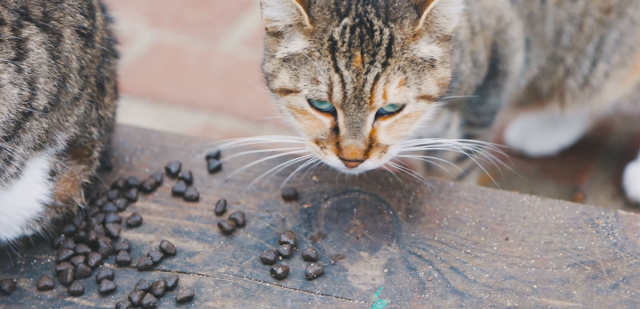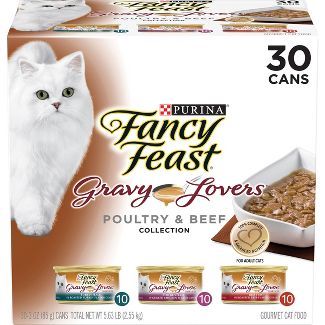As the owner of a 10-year-old cat- overwhelmed by the options out there from grain-free and also raw to human-grade and freeze-dried-- vet Brennen McKenzie, who blogs concerning science-based pet dog treatment at the Skepta Vet, might help place your mind at simplicity: "The fact is that there is no one 'right' food, as well as a lot of cats can flourish on a broad range of available diet plans," he says. "Contrasted to the slipshod diet plan of whatever target and scavenged dead things that feral felines can find, our animals have an outstanding source of nourishment in traditional business feline foods."
Also, with that soothing advice, there are still hundreds of feline food formulas to choose from, so I asked McKenzie and 11 other experts to assist me via the different alternatives and clarify why a cat proprietor could choose one brand name or kind of food over one more. As clarified in the criteria below, several identifying variables will depend upon your cat's specific requirements (frequently identified by their age). In contrast, others are much more subjective (as cat owners recognize, finicky felines commonly have their mysterious preferences).
Utilize the web links listed below to navigate to the type of cat food you're seeking, and have a look at our complete requirements right here.
Best overall cat food | Best meat-in-gravy cat food | Best (less expensive) meat-in-gravy cat food | Best shredded cat food | Best cat food for sensitive stomachs | Best food for purebred cats | Best human-grade cat food | Best raw food for cats | Best food for senior cats | Best cat food for kittens | Best (less expensive) cat food for kittens
Overall, the best cat food
Adult | High protein, moderate fat, very low carb | Wet, pâté | Approx. $0.35 per ounce
As discussed, there's no one "ideal" feline food. However, according to the veterinarians I talked to, this Purina Pro Plan formula needs to check all the dietary boxes for most grown-up cats with no special needs. Since Purina employs full-time vet nutritional experts and spends heavily on research and development, it's a preferred brand by vets like Cori Blair of Feline Wellness and Valerie Parker, an associate professor of small-animal internal medicine and nourishment at the Ohio State University's University of Veterinary Medicine. Chyrle Bonk, a vet with the pet-health internet site Pet Designer, such as Purina Pro Strategy because the food is high-quality while still inexpensive and easy to find. "Purina uses real, entire meat as their initial component as well as offers high healthy protein, modest fat, and plenty of healthy fiber," she claims.
Adult | Very high protein, low fat, very low carb | Wet, meat in gravy | Approx. $0.38 per ounce
If your cat enjoys meat-in-gravy formulas, Berg recommends this chicken-in-gravy taste from Weruva, which has a high protein and low carbohydrate content, as an excellent option. Susan Lauten, a pet nutrition consultant, also recommends this particular brand of food. It is grain-free, if that is something you are searching for; but, as previously said, "grain-free" is more of a marketing phrase than a trustworthy indicator of nutritional value and quality.
Adult | High protein, moderate fat, moderate carb | Wet, meat in gravy | Approx. $0.25 per ounce
When it comes to purchasing cat food, there is nothing wrong with saving money as long as you are purchasing a meal that is nutritionally sound. In Berg's words, "a lot of people think Fancy Feast is like a cat version of McDonald's, but that isn't the case at all." "A large number of the Fancy Feast items are actually pretty high in protein and very low in carbohydrates," says the author. This variety pack of protein-rich, meat-in-gravy flavors checks all of her boxes and would be a wonderful choice for cats who want to switch up their meals on a consistent basis.
Adult | Very high protein, low fat, very low carb | Wet, shredded | Approx. $0.68 per ounce
If you look at Pierson's chart, you'll find that Tiki Cat offers a variety of foods that are high in protein and low in carbohydrates, and Lauten enjoys both the wet and dry feeds produced by the company. Many brands of Tiki Cat food are fish-flavored, which cats find particularly appealing due of the salty taste. However, some veterinarians, such as Berg, advise against feeding cats fish since fish-flavored cat food has been related to hyperthyroidism. Your veterinarian can assist you in determining whether or not you should limit the amount of fish in your cat's diet. It contains shredded chicken and should appeal to cats who prefer their food to be a little chunkier than the standard version.
What we’re looking for?
Life phase: "One of the most fundamental part when you're buying food for your family pet is searching for the nutritional-adequacy statement and also seeing to it it's for the suitable life phase for your animal," states Martha G. Cline, a licensed veterinary nutritionist at Red Bank Vet Healthcare Facility in New Jersey. All pet food ought to have a nutritional-adequacy statement from the Organization of American Feed Control Officials keeping in mind whether it meets the standards for growth (helpful for kittens), grown-up maintenance (for preserving a healthy and balanced weight), or all life phases (any age).
Nutritional breakdown:
There is no nutrition label on your cat's food that breaks down the particular quantities of carbohydrates, fat, and protein it contains like there is on human food. AAFCO-compliant foods, according to McKenzie, are acceptable since they provide enough amounts of all macronutrients. Individual cats all have varying demands, and "almost all commercial diets fit within these ranges," the author notes.
On the other hand, some vets are more precise in their advice. A diet high in protein and low in carbohydrates is recommended by Tribeca Veterinary Wellness's founder, Jennifer Berg. Chew's veterinary expert Jennifer Coates believes that cats require more protein than many other species, but she emphasizes that the protein "should be sourced from animals" in her explanation. There is also a comprehensive, publicly accessible Google spreadsheet with the nutrient profile for hundreds if you'd like to see a specific formula's nutritional breakdown. However, ask your veterinarian if they have a preference for a particular blend for your cat's requirements.
This marketing slogan, "grain-free," has been used by certain cat food manufacturers, but it doesn't tell you much about the nutritional value of the food. "Grain-free foods can be nutritionally good or dreadful, and the presence or absence of grains itself indicates nothing about the health impact of the diet," McKenzie adds. Concerns regarding grains and carbohydrates in cat food are based on a lack of scientific evidence and should not be used as the foundation for selecting a food for your cat.
Wet food or dehydrated food:
The two significant kinds of pet cat food are wet and dry. Before picking one form over the other, ask your veterinarian what they recommend for your pet cat's specific requirements. Because cats usually drink little water, some vets like wet food since its higher wetness content keeps felines hydrated, which might aid stop kidney disease. Other veterinarians disagree, saying that dry food urges cats to drink even more water. There's little clinical proof to promote the link between wet food and healthier kidneys. Wet food is additionally lower in calories, so some vets might suggest it if your feline has a hard time maintaining a healthy weight. Dry food, or kibble, can remain fresh longer, which may make it a great alternative if your cat likes to graze at her meals over the day. Some dry food is freeze-dried, a process suppliers use to keep active ingredients fresh (particularly with raw food) without taking the chance of microbial contamination. Within the wet-food group, you'll discover pâtés (loaf-style food with an identical structure), shredded meat solutions, and also meat-in-gravies (a liquid-based food with pieces of meat). Particular felines often tend to have a preferred style of food, so you may have to attempt a few various kinds.
Approximate price per ounce:
The expense of feline food varies depending on the brand and the formula you pick, and also, extra pricey food isn't always much healthier. Considering that you'll be purchasing a great deal of food throughout your pet cat's lifetime, we've listed the approximate price per ounce for every food based upon the manufacturer's recommended market price (which might be different than the retailer rate as those can change as a result of different promos). When it comes to just how much food to feed, pet cats typically need 200 to 250 calories per day, but this number differs based upon their size, task degree, and whether they require to shed or put on weight. (Calorie counts per ounce of food also vary, so you'll require to examine the feeding directions on the product packaging.) Megan Guard, a vet nutritional expert at the Virginia-Maryland College of Vet Medication at Virginia Technology, encourages getting in touch with your vet for more specific assistance and consulting this body-condition rating chart to see if your pet cat is under- or overweight.





